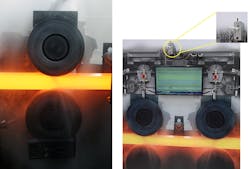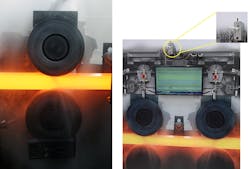Sensors enable machine-health monitoring
The Industrial Internet of Things (IIoT), a subset of IoT; Industry 4.0, the fourth industrial revolution; Industrie 4.0, the German government initiative to digitalize manufacturing; and Smart Manufacturing, the U.S. initiative led by the Smart Manufacturing Leadership Coalition, all share the common vision of improving manufacturing through the use of connected devices.
Smart linear position sensors provide a rich set of diagnostic data useful for machine health monitoring and minimizing downtime. A sensor gateway helps aggregate data across multiple devices and provides instant access to critical machine functions, which can be used to improve machine performance, optimize maintenance cycles and detect issues at an early stage to increase machine uptime.
Q: How has linear sensor technology changed over the past 50 years, since the Temposonics I was introduced in 1974?
Q: How have smart sensors evolved since analog devices were introduced, and what improvements were made with each new step?
A: Earlier sensors were analog-based. But these sensors had individual wires and cables that were required. In addition, it was difficult to troubleshoot the analog sensor since there were not a lot of diagnostics tools to assist in determining what was wrong. Fieldbus devices followed the analog devices. These Fieldbus devices were capable of connecting multiple devices using a single cable that made them efficient. Because of this single-cable connection, data transfer from the sensors to the programmable logic controller (PLC) was much more effective and reduced costs. Next, Ethernet devices followed, and these devices provided real-time data and increased connectivity distances, and they were able to connect to multiple nodes or sensors. Finally, the IIoT feature were added to our newest sensors. These sensors had the same advantages of standard R-Series V sensors, while including IIoT information along with the position data.
Q: What is the edge layer of the Industrial Internet of Things, and how is data transferred from the edge to other layers of the IIoT?
A: The edge layer is the lowest tier of the IIoT process. This is where the sensors and other devices that contain IIoT information provide their metadata that must be processed or evaluated. This information is then passed to the connectivity layer where communication and processing of the metadata takes place. From there, the information is sent to the data-analysis layer. Once analyzed, the data is passed to the data-accumulation layer where it is stored for future usage. From there, various applications use this data to generate reports, post processing, or feedback control to the main system.
Q: What role do sensor manufacturers play in machine-health monitoring?
Q: It's clear that smart sensors provide Industry 4.0 data, but how does transmission using a sensor gateway differ from an existing Ethernet channel?
A: With our gateway, the data is transferred from our sensor to the gateway and vice versa using communication over power lines (COPL). This Industry 4.0 data is then observed via our webGUI, or it may be transmitted to multiple clients or “listeners” via OPC UA. As for Ethernet sensors, Industry 4.0 data can be transmitted along with the standard position data based on the PLC protocol being used.
For more information, visit www.temposonics.com.
About the Author
Mike Bacidore
Editor in Chief
Mike Bacidore is chief editor of Control Design and has been an integral part of the Endeavor Business Media editorial team since 2007. Previously, he was editorial director at Hughes Communications and a portfolio manager of the human resources and labor law areas at Wolters Kluwer. Bacidore holds a BA from the University of Illinois and an MBA from Lake Forest Graduate School of Management. He is an award-winning columnist, earning multiple regional and national awards from the American Society of Business Publication Editors. He may be reached at [email protected]

Leaders relevant to this article:



